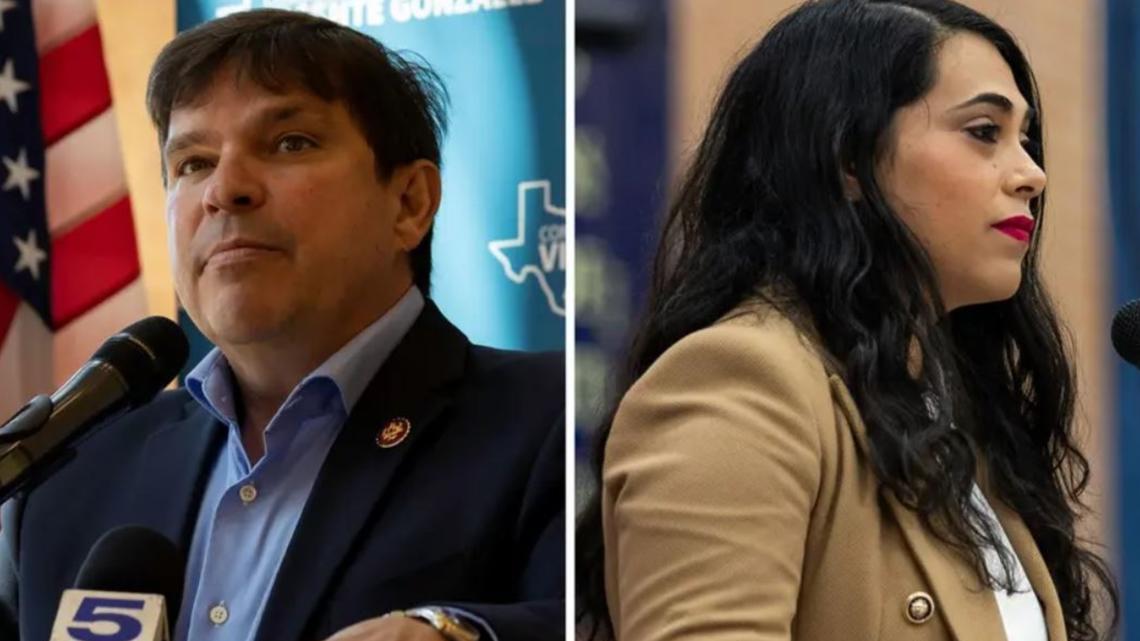From Memes to Politics: The Journey of Ruben Guerrero in a Divisive Campaign
In the world of contemporary political advertising, the distinction between fact and spectacle often blurs. The latest instance of this phenomenon is illustrated in a controversial advertisement focusing on U.S. Rep. Vicente Gonzalez’s campaign in Texas. At the center of this political skirmish is Ruben Guerrero, a local business owner whose controversial social media presence has thrust him into an unexpected limelight.
Who is Ruben Guerrero?
Ruben Guerrero is described as a self-proclaimed "conspiracy theorist" who has made headlines for the memes he shares online. His posts, which include outlandish claims about historical events like 9/11 and the COVID-19 pandemic, have drawn widespread attention and criticism. In a particularly inflammatory meme, Guerrero dismissed 9/11 as “the biggest inside job in history … until COVID,” suggesting that both events were manipulations that served a greater agenda.
Not only does Guerrero share such contentious theories, but he has also targeted public figures like Michelle Obama and U.S. Rep. Dan Crenshaw. His mockery of Crenshaw’s eyepatch, a result of his service-related injury, demonstrates the often personal nature of online political discourse.
The Political Advertising Landscape
Recently, Guerrero was featured prominently in an ad released by the National Republican Congressional Committee (NRCC). This advertisement aims to undermine Vicente Gonzalez, a moderate Democrat, by portraying him as someone who neglects serious issues like economic conditions in favor of controversial topics such as gender transition for minors. The ad, which is part of an $800,000 ad buy in the South Texas region, strategically seeks to sway voters in one of Texas’s few competitive districts.
The ad underscores a significant tactic often deployed in political campaigning: the use of relatable, everyday individuals to deliver powerful testimonials. Guerrero’s presence, however, raises questions about the vetting process for individuals enlisted to promote candidates and their messages.
The Reaction from Gonzalez and His Supporters
Victorio Gonzalez’s campaign has not taken Guerrero’s involvement lightly. He criticized the ad not only for its misleading claims about his stance on gender-related issues but also for relying on an individual whose past includes inflammatory statements about significant national tragedies. Gonzalez described the campaign tactic as an "amateur hour," highlighting the lengths to which his opponents may go to win political office.
LGBTQ+ rights organizations have also condemned the advertisement’s strategic framing, asserting it represents a form of fear-mongering. They argue that discussions about gender transition for youth are often mischaracterized and sensationalized in political discourse.
Guerrero’s Perspective
Despite the backlash, Guerrero remains unapologetic about his social media activity. When approached for comment, he defended his posts and expressed belief in the validity of his perspectives. "I’m a conspiracy theorist that’s almost batting .400," he stated, indicating a sense of pride in his controversial views. His rhetoric suggests he occupies a space where he feels justified in promoting narratives that align with a distrust of mainstream media and government actions.
However, Guerrero’s social media influence is arguably limited, with only about 1,700 followers on Instagram. This raises another question about the efficacy of using individuals with relatively small online followings as key figures in high-stakes political advertising.
The Broader Implications for Campaign Strategy
Political strategies often adapt to what resonates most with their target electorate. In this case, the NRCC has determined that issues surrounding gender transition surgeries could mobilize voters, despite being a highly polarizing topic. Daron Shaw, a political scientist at the University of Texas at Austin, notes that the effectiveness of such advertisements remains questionable. The increasingly polarized political landscape means that traditional advertising strategies might not significantly sway the opinions of entrenched voters.
As political campaigns continue to evolve, the decision to amplify the voices of individuals like Guerrero may reflect a deeper trend aimed at igniting partisan fervor rather than fostering genuine dialogue around policy.
Final Observations
As Ruben Guerrero navigates his role as an unexpected player in a targeted congressional campaign, the convergence of conspiracy theories and political advertising opens a window into the complexities of modern voter engagement. His journey from small business owner to a startling centerpiece of Republican strategy serves as an illustrative example of how personal beliefs and social media activity can unexpectedly collide with the high stakes of electoral politics.
